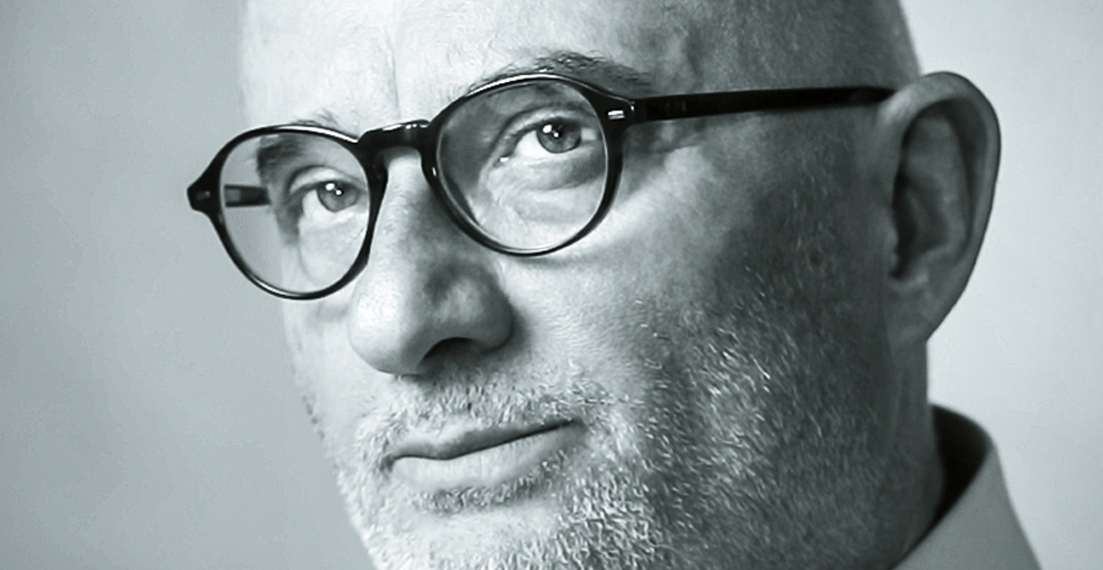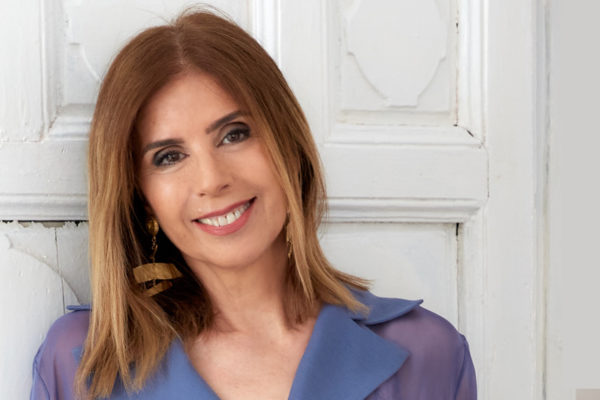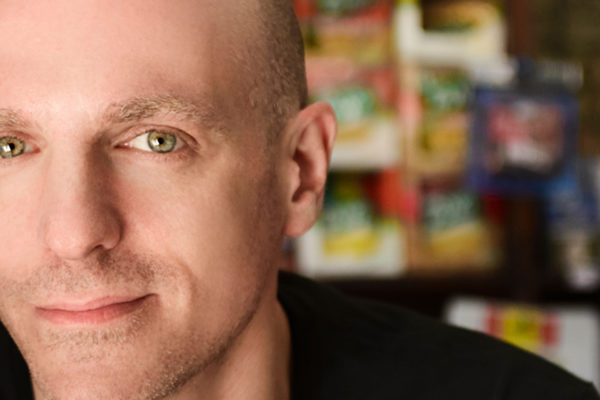
ANDREA SOMMAVILLA: LUXURY PACKAGING MADE BY PEOPLE FOR PEOPLE
Andrea’s battleground lies in the complex space between development, purchasing and marketing.
His role is to match the technical and aesthetic aspects so that together they make up the “perfect packaging”.
His more than 30 years of experience at LVMH, Intercos or Unilever have made him a great technical expert in primary and secondary packaging in the cosmetics and perfumery sector and, currently, he dedicates 100% of his time to consultancy and teaching at Cosmética Italia (National Association of Cosmetic Companies) and the IULM University (Milan) in the Master’s Degree Management and Communication of Beauty and Welness.
This interview is based on one of his latest articles, written for Cosmetic Technology magazine: Buone pratiche di fabbricazione. Come il fattore umano e le competenze techniche possono influenzare la qualità dei componenti del packaging e del prodotto. (Good manufacturing practices. How the human factor and technical competences can influence the quality of packaging and product components).
what particularly catches our attention about this article is the overall view of packaging, a perfect balance between functional, technical and aesthetic aspects, as well as the importance of the human aspect as a guarantee of the quality of these packages, whether they are primary or secondary.
Reading and talking to him is learning, regardless of whether you are a brand, a laboratory or a packaging supplier.
We would like to thank him very much for his participation in MakeBox.
We leave you with the interview:
MakeBox: There is a huge amount of information on the web about packaging, but almost always (especially when we talk about luxury packaging) in terms of communication, aesthetic value, functional value…
On the contrary, very little is said about the safety that both primary and secondary packaging offer to the product, and about the fact that this safety is the result of a precise production process based on good manufacturing practices.
What role does secondary packaging play in a beauty product’s functional package?
A. Sommavilla: Secondary packaging plays a very important role in the functional package of a cosmetic or beauty product.
Its values are expressed in different ways and cover the area of communication, technical performance and, finally, the aesthetic component.
All these aspects contribute to complementing the product, and all provide enormous value as they have both the function of protecting the primary product, but also hold the weight of the commercial strategy, that means, it is the one that attracts the consumer.
I would say that the secondary packaging is like the label suit, it has the important task of expressing the values of the company through material, shape, colours, tangible values, etc.
Therefore, it must be functional for marketing and convey a number of material and “immaterial” characteristics such as design and colours.
Let’s say that the packaging should not only satisfy a practical need, but should also please us and make us empathise with the brand and the company.
But, as mentioned above, it must also fulfil a number of other important functions, such as withstanding handling and assembly operations within the production system, making the product identifiable for storage, transport, distribution and sale and, finally, offering ease of use to the consumer.
Therefore, the secondary packaging has equally important responsibilities that result in minimising the risk of alteration of the product and its components throughout the process. In short, the packaging must be seen in all its dimensions, from the inside (the manufacturer of the product), but also from the outside (the product’s consumer).
MakeBox: What are the most critical or most important points to watch out for during the production process of a secondary packaging?
A. Sommavilla: During the development and production of a packaging component, whether primary or secondary, the following three functional areas are important:
1. The INTRINSIC FUNCTIONALITY of each of the product’s components. This characteristic has value whether the packaging is primary or secondary.
This is an important aspect because it refers to the totality of the packaging and its integrity from the physical, aesthetic, and dimensional point of view of all components, be they labels, bottles, cases, cylinders, containers, tubes, pumps, or cups.
The product requirements: the individual quality of each element must be guaranteed.
2. The FUNCTIONALITY BETWEEN THE DIFFERENT COMPONENTS of the product. This aspect, equally important, refers to the coupling between each element of the product.
It translates into an effective functional relationship, such as vacuum sealing, label adhesion, decoration process, assembly, functional properties of glues, eliminating interference between primary and secondary packaging that could diminish aesthetic characteristics, and many others.
3. FUNCTIONAL ROBUSTNESS projected to the life cycle and the production cycle.This aspect refers to handling in the warehouse, transport and the production phase on the lines.
These are situations where the aesthetic and functional characteristics are under greater stress. Packaging can be altered and this should never happen, or we should try as much as possible.
MakeBox: One of the aspects to which you pay most attention or give most importance is the human factor and the training of workers. How do you train the people who make up a production line in sensitivity to luxury and extreme quality?
And on the other hand, you say in your article that writing a method for training the more operational part of production (operators, warehouse workers, printers, machinists…) in sensitivity, would be equivalent to “caressing” the product and understanding and achieving quality and full customer and consumer satisfaction.
It’s really a beautiful concept, but how do you convey all this and make it a reality in the midst of the maelstrom and tension created by ever shorter delivery times and demanding KPIs such as OTIF and OEE?
A. Sommavilla: Training people is a very important task.
In order to convey what the requirements of the product should be, it is first necessary to understand the customer’s values.
Usually, the point of contract between the supplier and the customer is a commercial figure; rarely, it is possible to link the customer to the more operational side, to those who physically manufacture the components of the product or the product itself.
In my opinion this is the right step to take.
It is necessary to transmit these values to the most operative part of all the processes, and doing that through a minimum knowledge of the history of the product, its positioning in the market, the reference customers of “that brand”, which are the points of sale through which the product will be sold.
There was a time, for example, when I had to create products for a line that went to the most beautiful and exclusive hotels in the world.
In order to set the quality of the product at that level, in addition to defining the product requirements with extreme precision, I asked my sales manager to provide me with presentation videos of these hotels, videos showing the spaces where the products we were going to manufacture would be displayed, the level of elegance and refinement of the bathrooms, and so on.
A film through which it was possible to see the hotel in its entirety, the furniture, the garden, the building. Everything breathed a very emotional, enveloping message that inspires the product.
Involving the team that is going to be in charge of the production of the product motivated me to do it well, very well.
What I tried to do was to bring those people who had to produce the product into that idyllic context.
I believe that this ensured that in each process or operation there was that “caress” of which I speak.
The realisation of this product coincided with my own and, I believe, other people’s professional satisfaction.
For me, working to manage and balance such demanding efficiency KPIs as OTIF and OEE and quality through staff training is the secret, it is the element that allows us to aim for luxury and extreme quality.
MakeBox: For you another very important part is choosing reliable and qualified suppliers. What or how does a supplier demonstrate or inspire you with confidence? What elements are key?
A. Sommavilla: As I see it, the reliability of a supplier depends on the management system of some fundamental points of the product manufacturing process, which are an integral part of good manufacturing practices:
Firstly, the CONTROL OF RAW MATERIALS, the control operations of raw materials on their arrival at the facilities are fundamental because they allow us to evaluate not only the correspondence of the goods ordered with those delivered, but also their suitability for use in order to guarantee the quality of the product.
The structure must have the appropriate instruments, procedures, control methods and qualified personnel to verify the dimensional, functional and aesthetic characteristics of the materials it purchases and then converts.
MANUFACTURING ACTIVITIES are also a hot spot, they must be supervised through an effective process control, capable to guarantee the constant supply of high quality products. This will require an exhaustive control of all the characteristics that qualify the desired result.
Another really important element is TRACEABILITY AND FOLLOW-UP. There must be a close correlation between the set of records made after a measurement, i.e. between the results obtained from the activities performed and recorded in the documents and the product requirements.
All materials must be identified with a unique code and batch number.
Finally, STAFF involved in operational activities must be adequately trained to enable the achievement of the result, the full satisfaction of product requirements.
MakeBox: Interesting reflections after which, we can only ask you to describe “the perfect packaging”.
A. Sommavilla: For me, packaging must satisfy functional and aesthetic aspects capable of responding to a market that is progressing faster and faster.
We must understand that it is a very powerful weapon of seduction that, especially in cosmetics, but not only, must attract the consumer through a sensory cascade that conquers in all its phases.
It must therefore attract the customer during the purchase phase by conveying an immersive experience for the senses, first the sight and then the touch, in order to obtain a shopping experience that is fully satisfied through use.
It must not disappoint from the environmental impact point of view and, therefore, it must be a product that allows easy separation of the different elements to provide an end of life that guarantees the circularity of the materials. Nor should it be characterised by an excessive abundance of material overloaded with elements that are not necessary to ensure the necessary protection and simple and easy usability.
MakeBox:Thank you Andrea for sharing this interesting and lesser known part of packaging development, where good manufacturing practices are also an essential part of the final luxury experience that certain product aims to offer.



